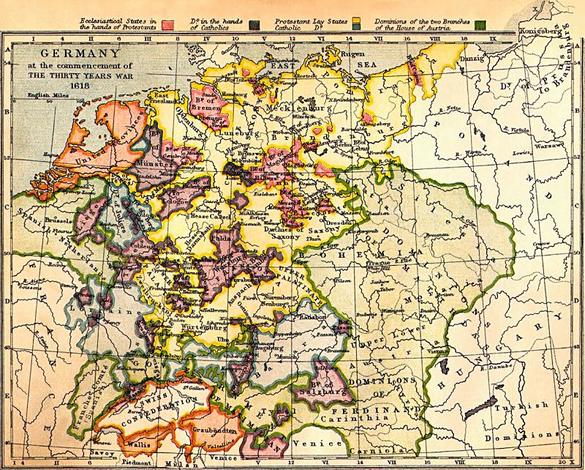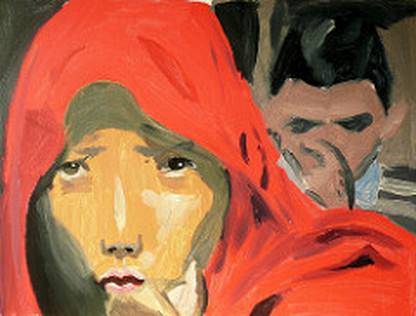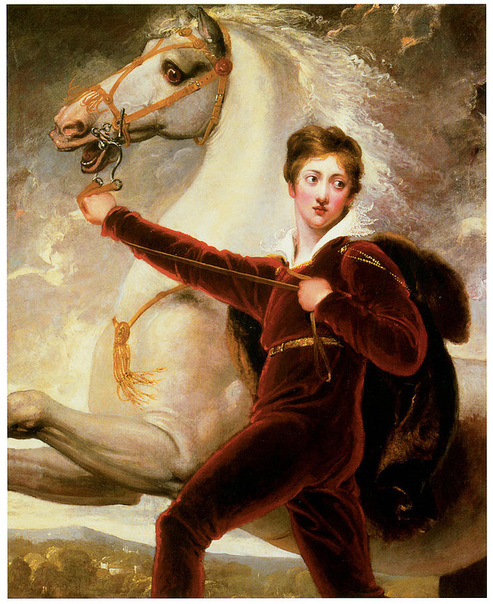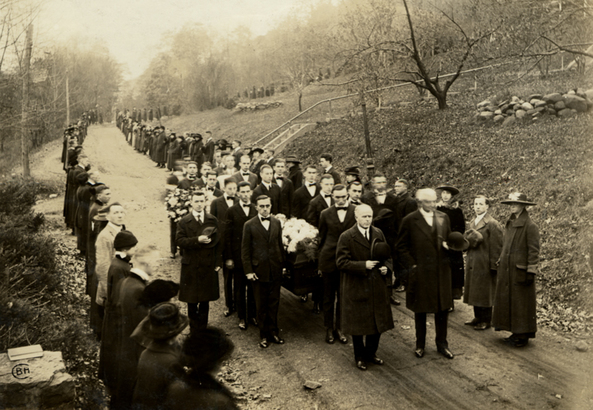|
The Burgundy Boy is a popular folk character originating in North Germany, and has spread through much of northern Europe. In Finland they have an annual Burgundy Brunch celebrating the legendary figure, during which all food consumed has to be of a burgundy hue. In older celebrations it would have been a simple feast of wine, red cabbage and grapes, but in recent years revellers have taken to using food dye in order to broaden the culinary selection. What we know of the Burgundy Boy is derived from a collection of ballads, folk songs, oral legends, nursery rhymes and one or two large historical accounts from Bavarian chronicles of the late 16th century. He usually appears as a boy of about 7 years old wearing a kind of monk’s habit, the colour of which is of course a deep red. He is said to cry tears of blood but never speaks in any of the legends save for one peculiar French account that asserts it was his voice that Joan of Arc heard, and not God’s. The most widely-known myth is recounted below: In a small town in Germany some time ago, the residents started to encounter various problems. The local mill burnt down, and the people there had no work. Even more people had no bread. Many were poor and hungry. They went to church and prayed, but nothing changed. They knocked on every business in town, but could find no work. They knocked on every rich man’s house in town, but could find no bread. Their numbers grew, and so did their poverty. Soon, what had been a prosperous and happy town was reduced to misery. The poor and rich were miserable alike. The poor were miserable because they had nothing to eat, and the rich were miserable because every time they ate they felt guilty, and every time they walked in the park, or by the river, or near the castle, they felt the pain and hunger of the poor, but were too proud to help, and too afraid to look them in the eye. And so it went on, the rich folk of the town hiding away, getting smaller in number as the work ran out in other places, while those with nothing grew. Their clothes became worn and their stench became unbearable. Their suffering was clear to all, but no one helped. It looked as though the town would waste away, be consumed by despair and desolation, until a small boy wearing a deep red monk’s habit was seen. Then things started to change. It isn’t known who saw the boy first, but soon word had spread that a boy priest had arrived in the town and was there to offer them salvation. The rich folk put together a fine offering of bread, fruit and vegetables, and the poor folk contributed what they could, which was very little. Many wondered why it had been so difficult for the rich to offer them a crumb, but so easy to gather a feast for the boy priest, but they put their grumblings to one side, because they too saw hope in this mysterious burgundy boy. The feast was laid out in the church and the town waited for the boy to come. They waited, and waited, and the bread became stale and the apples turned brown, but still they waited. The boy did not come. The most outspoken members of the community questioned his very existence, and decided the food should not go to waste. But alas, the fruit was already full of maggots and the bread had turned mouldy. Slowly the poor and rich made their way home, disheartened and disappointed. Their salvation had deserted them. The air in the town turned cold and grey, and the hearts of many frosted over. Sadness and emptiness filled the streets, and many decided the end was near. For the most melancholy folk in the town, no ointment, no prayer, no word of hope was good enough. And then he came again. A poor drunk man who had once been a miller was seen walking over the town bridge late at night, but the next morning was found drowned in the river. The magistrate declared his death an accident, and a reminder of the value of temperance in these dark times, but several witnesses swore they had seen the boy in red push the miller off the bridge. A few days later an old preacher who had grown bitter and gloomy in these dark days was found with his brains blown out and a pistol in his hand. A local tramp testified that he saw the preacher shooting pigeons and that a small boy had bent the barrel of the gun towards the preacher’s head. Several destitute women were tragically cut to pieces down on the railway track, and more than a few passers-by claimed to have seen a boy in red in command of the locomotive. A poor young doctor whose patients could no longer afford to visit him was discovered in his bath with his throat cut. His wife through her screams could be heard wailing about a little monk who had jumped out of the window. More and more tragedies struck, all involving the most pained and sorrowful members of the community. Every time the Burgundy Boy was implicated, but of course there was little evidence. Parents told their children not to cry, otherwise the Burgundy Boy would visit them, and the less sensitive folk in town mumbled that perhaps this small monk was putting the poor people out of their misery. In this time the population of the town decreased rapidly, and mass funerals had to be arranged at very little expense. The town was still poor and could ill afford a full service for each of the deceased. Over time, however, the prospects of the town began to turn. With a reduced population there were less mouths to feed. Poverty was felt less acutely, and soon there were enough jobs to go around. With the saddest people in the town wiped out by the wrath of the Burgundy Boy, those that were left had hope in their hearts and secretly thanked the Burgundy Boy for giving the town a second chance. In time people began to share their gratitude for his mercy openly – a shrine was built in his name, paid for, of course, by the same rich folk that had gathered the feast of bread and fruit so many years before. These rich folk were thankful that this Burgundy Boy had cleared the streets of crying mothers and drunk fathers, and restored order and prosperity to the town. Time went on, and the men and women of the town soon forgot that they had ever been burdened with such misery. The last time the Burgundy Boy was seen was at the bedside of an elderly widow who had been ill with consumption for weeks at the local hospital. The nurses differed in their description of the event. One nurse said the Burgundy Boy had waited at the widow’s side throughout her last night, holding her hand and finally giving her the most tender of kisses on the forehead before she passed. Another nurse swore there had been a pillow between his kiss and her head, but all agreed that she was at peace now and that the Boy had been a comfort to her in her last hours. The town grew and grew in size and happiness, and was eventually renamed Hamburg, in
honour of the Burgundy Boy, and to this day you can still hear parents warning their children never to be sad, always to be happy, lest the Burgundy Boy return and continue his work…
2 Comments
|
|
Web design by Nigel Munson
Hosted by weebly.com Production stills by Peter Munson/Zinta Gercans/Matthew Kaltenborn |






 RSS Feed
RSS Feed